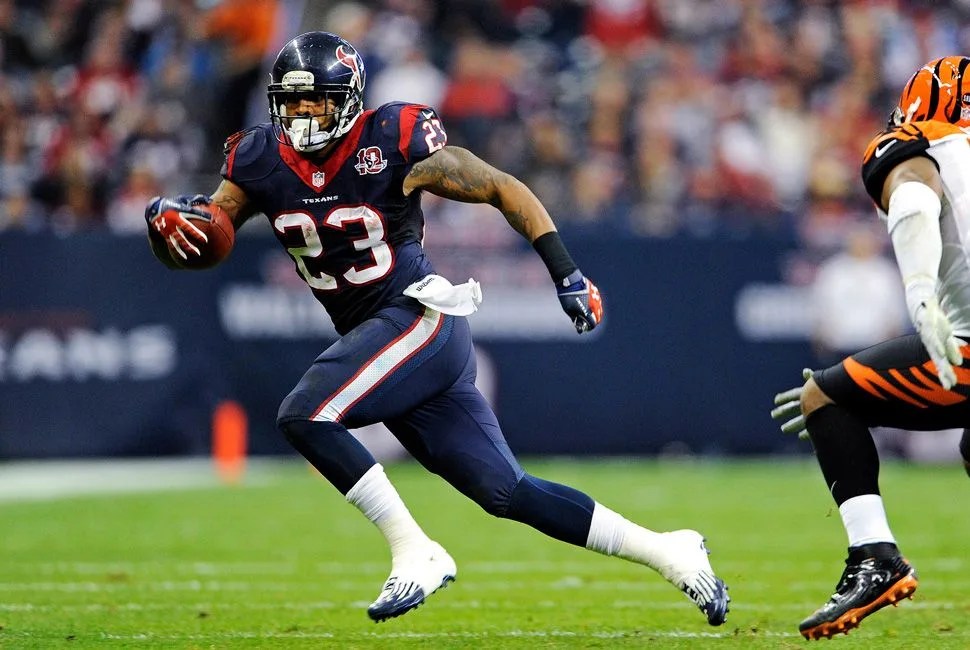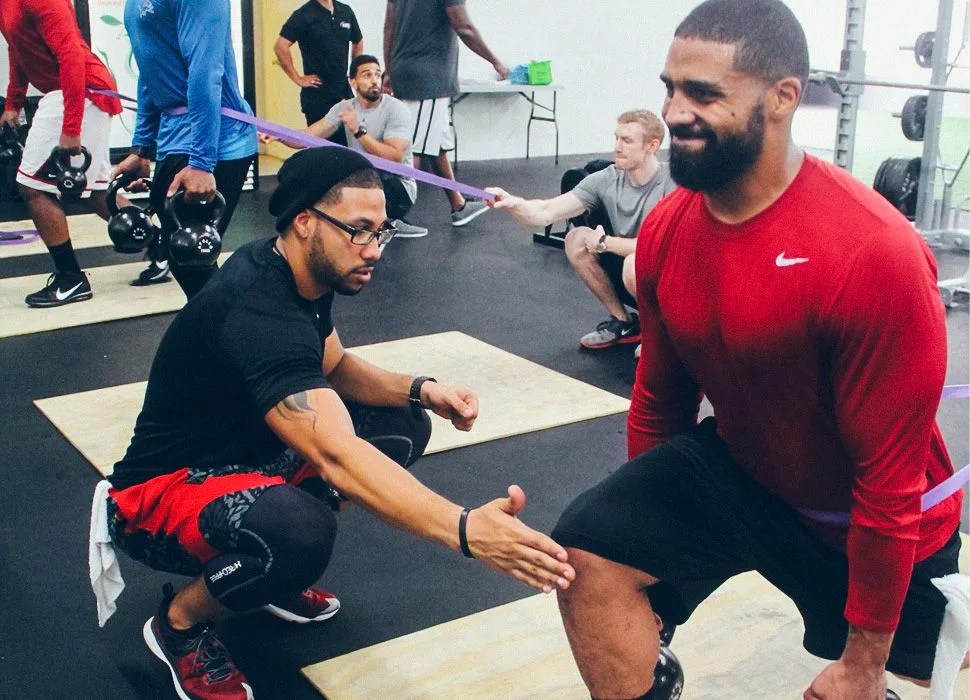It’s a balmy August evening in Houston and the Texans are slogging through their first practice in pads when star running back Arian Foster tears his groin. When it happens, Foster is running for a pass and planting his foot, loading up his leg in anticipation of making a lateral move to the opposite direction. His groin completely detaches from his pelvis. The team will soon learn he needs surgery. The Texans fear he could miss eight weeks of the season.
This exact movement is something Foster did literally thousands of times in the offseason, part of an exercise his trainer and brother Abdul Foster refers to as the “lateral-linear” drill. In the drill, Arian starts in a kneeling position with one leg raised and sprints forward on a whistle, usually extending a medicine ball frontward or putting a resistance band around his waist to add difficulty. “We made that movement in the sand, on the turf, on the hill,” says Abdul. “If [his groin] was going to go, it should have went in the offseason. It boggles my mind.”
Abdul admits he can’t explain all of Arian’s injuries, but the pair have a long training history together. Abdul, a former college sprinter, started training Arian in 2008 while Arian was still a running back at the University of Tennessee. Abdul was a major factor in Arian’s rise in the NFL from an un-drafted practice squad player in 2009 to a record-breaking All-Pro in 2010. Abdul opened his Houston-based IX Innovations gym in 2014, structuring individual workouts and offseason programs for other NFL-ers like Andre Johnson, Duane Brown and James Ihedigbo. Still, Abdul’s training with Arian has seemed to make the most dramatic impact. He knows how to get the best from Arian’s body because it’s not that different from his own.
Former Texans coach Gary Kubiak used to insist that Arian got better as the game progressed. This conditioning is not by accident. Details are paramount to Abdul’s training regimens. In 2010, he eliminated inefficient mechanics in Arian’s sprinting technique and helped improve his 4.7-second 40-yard dash to a 4.2. He used similar drills to help his brother regain that “second gear” this offseason before he was hurt. He and Arian elected to center his diet around lamb after a blood test found it to be most effective protein for Arian’s body type. Abdul even brought in a boxing trainer twice a week this offseason because he wanted his brother to have total, independent control of his hands and feet. “[Before he was injured], Arian was in the best shape I’ve seen since 2010,” Abdul says.

As a season nears, Arian trains with Abdul twice a day. Before training camp and his injury, Arian was reporting to Abdul’s gym by about 8:30 a.m. The pair spend 15 minutes correcting inefficiencies in Arian’s running motion, namely straightening an anterior pelvic tilt that can cause issues in his hamstring, groin and posterior. Then, they move on to a 45-minute coordination session, an hour of strength training, and 20 more minutes of corrective running drills. For every one of Arian’s attributes on the field, there seems to be a corresponding workout in the gym. Abdul praises Arian’s ability to gain yards after contact on the field; he says it can be traced back in part to a stationary lunge drill, during which Arian puts his front foot on an unstable pad and holds a kettle bell off to one side, creating imbalance. Then, he does a slow, controlled lunge, building the muscles that supply power through deceleration and give him the strength to soldier on while being tackled. He will do the same thing in the sand pit too.
“It sounds like unorganized chaos, but there is a reason and focus inside every workout,” Abdul says. “I am targeting specifically what we need to do in different elements.”
